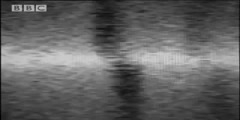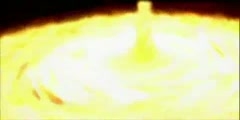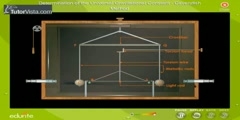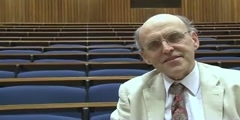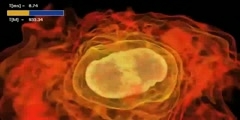Lec 13 - Stellar Mass Black Holes (cont.)
"Lec 13 - Stellar Mass Black Holes (cont.)" Frontiers/Controversies in Astrophysics (ASTR 160) Class begins with clarification of equations from the previous lecture. Four post-Newtonian gravitational effects are introduced and discussed in detail. The first of these is the so-called Perihelion Precession, which occurs when the major axis of a planet's elliptical orbit precesses within its orbital plane, in response to changing gravitational forces exerted by other planets. Secondly, deflection of light is described as the curving of light as it passes near a large mass. Gravitational redshift is explained as a frequency effect that occurs as light moves away from a massive body such as a star or black hole. Finally, the existence and effects of gravitational waves are discussed. The lecture closes with a brief history of the 1919 eclipse expedition that made Einstein famous. 00:00 - Chapter 1. Defining Black Holes in Terms of the Schwarzschild Radius 15:44 - Chapter 2. Perihelions and Deflection of Light 22:44 - Chapter 3. Hunting Eclipses 31:31 - Chapter 4. Gravitational Redshift 45:14 - Chapter 5. Gravitational Waves Complete course materials are available at the Open Yale Courses website: http://open.yale.edu/courses This course was recorded in Spring 2007.
Video is embedded from external source so embedding is not available.
Video is embedded from external source so download is not available.
Channels: Astrophysics
Tags: binary pulsar Eclipse Eddington gravitational effects lens redshift Kerr metric Mercury perihelion Planck's constant polar coordinate post-Newtonian quasar
Uploaded by: yalefrontcont ( Send Message ) on 02-09-2012.
Duration: 49m 2s
Here is the next lecture for this course
Lec 12 - Stellar Mass Black Holes
49:42 | 3124 viewsLec 14 - Pulsars
48:40 | 2792 viewsLec 15 - Supermassive Black Holes
47:38 | 3084 viewsLec 8 - Introduction to Black Holes
44:03 | 3268 viewsHubble data suggests a supermassive black ...
01:53 | 4353 viewsJets of supermassive black holes
00:58 | 4248 viewsA star under the gravitational pull of a ...
01:45 | 6977 viewsDensity of black holes
06:37 | 5710 viewsHow To Calculate For The Universal Gravit ...
03:28 | 8295 viewsLec 30 - Black Holes
10:09 | 2414 viewsLec 34 - Supermassive Black Holes
09:28 | 2712 viewsWhat Will happen if Black Holes Collide?
06:47 | 2406 viewsThe Black Holes And Gamma Rays
03:27 | 4754 viewsGravitational lensing: a way to detect da ...
00:00 | 8906 viewsAll About Planck's Constant
06:16 | 2516 viewsNo content is added to this lecture.
This video is a part of a lecture series from of Yale
Lecture list for this course
Lec 1- Introduction to Frontiers Controversies in Astrophysics
Lec 3 - Our Solar System and the Pluto Problem
Lec 4 - Discovering Exoplanets: Hot Jupiters
Lec 6 - Microlensing, Astrometry and Other Methods
Lec 7 - Direct Imaging of Exoplanets
Lec 8 - Introduction to Black Holes
Lec 9 - Special and General Relativity
Lec 11 - Special and General Relativity (cont.)
Lec 12 - Stellar Mass Black Holes
Lec 15 - Supermassive Black Holes
Lec 16 - Hubble's Law and the Big Bang
Lec 17 - Hubble's Law and the Big Bang (cont.)
Lec 18- Hubble's Law and the Big Bang (cont.)
Lec 19 - Omega and the End of the Universe
Lec 21 - Dark Energy and the Accelerating Universe and the Big Rip




